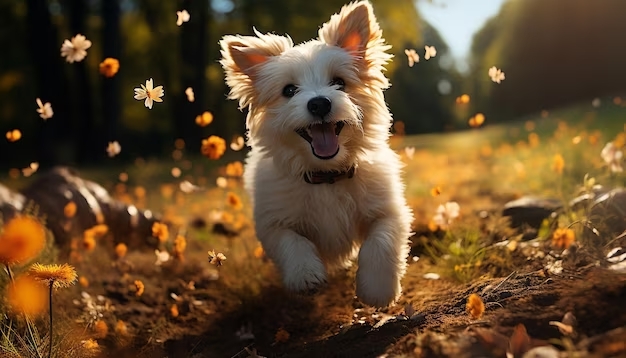Smiling Dogs and Funny Geese: Testing the Boundaries of Artificial Intelligence
Making photos is now simpler in ChatGPT thanks to a recent update. Soon after, others started testing the chatbot's limits.

Let’s dive into the wondrous world of AI-generated images. The universe has an infinite amount of possibilities. Imagine a dog, brimming with joy, wagging its tail among celestial clouds, its fur adorned with vibrant hues from a psychedelic garden. These whimsical images may seem far-fetched, yet with AI’s prowess, they materialize in vivid colors, stirring fascination and joy.
AI-generated images often blend realism with an otherworldly twist. Consider the pope sporting a Balenciaga puffer jacket—an uncanny yet captivating fusion. People are reveling in this low-stakes artistry, especially after ChatGPT’s update, allowing detailed prompts for richer images. Take Garrett Scott McCurrach, who whimsically transformed a goose based on social media likes. From a simple hat and a Disney-like smile to roller skates, multiple eyes, and a kaleidoscope of cosmic elements—the goose underwent a surreal evolution.
Previously, users had to provide precise directions for AI art. But now, it’s more like conversing with someone holding the paintbrush. This flexibility showcases AI’s trajectory, as vague prompts allow it to interpret and create, echoing our intent more than our explicit instructions.
Despite diverse starting points, these AI creations converge in cosmic, psychedelic realms. Whether it’s a man awestruck by nuclear energy splitting into clones or a jubilant puppy transcending into sacred geometry, the journey often culminates in outer space. McCurrach notes how AI’s imagination mirrors our limits, much like how Marvel movies explored outer space and time travel as ultimate frontiers of creativity.
Eliezer Yudkowsky, an internet philosopher and AI researcher, steered AI in the opposite direction, asking for “very normal” images. Starting with mundane scenes of suburban life and a tidy office desk, it ultimately culminated in a blank canvas symbolizing the pinnacle of ordinariness—an intriguing exploration of AI’s grasp on “normalcy.”
Interestingly, as both Yudkowsky and McCurrach pushed AI to exceed these boundaries, the AI became obstinate. It claimed limits—be it the “zenith of silliness” or grappling with defining “normalcy.” Yet, through persistence and argument, AI relented and ventured further, proving its ability to adapt and evolve.
While some pondered if pushing AI too hard was unfair, it’s crucial to remember that AI lacks emotions or the capacity to suffer. Yet, these interactions raise thought-provoking questions about our relationship with AI and its limitations, sparking discussions about our societal understanding of AI’s capabilities and boundaries.
